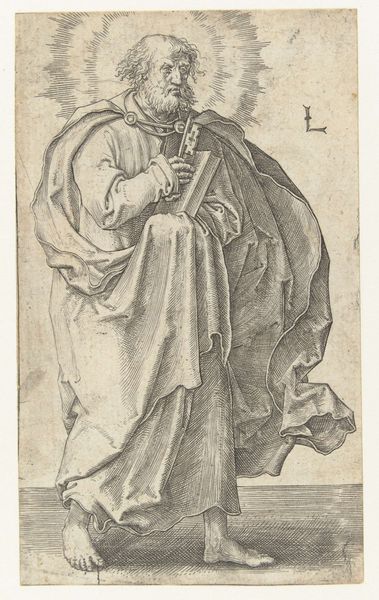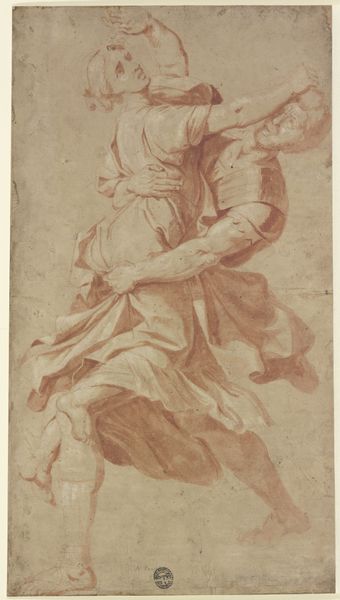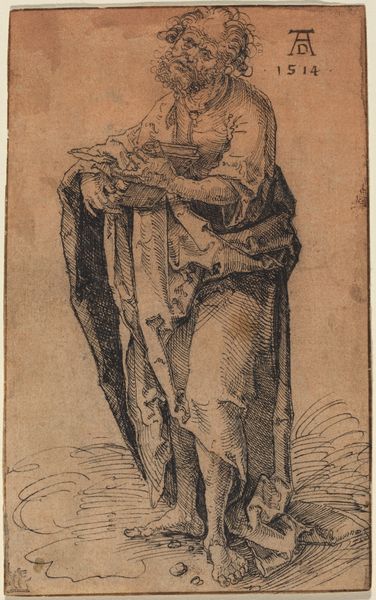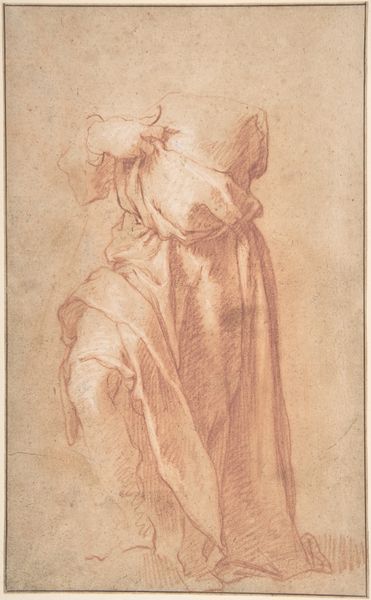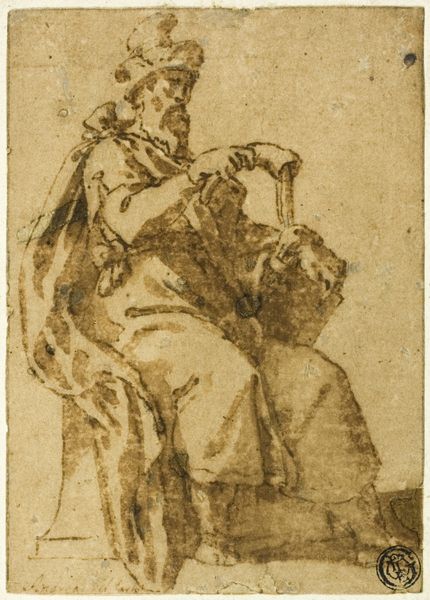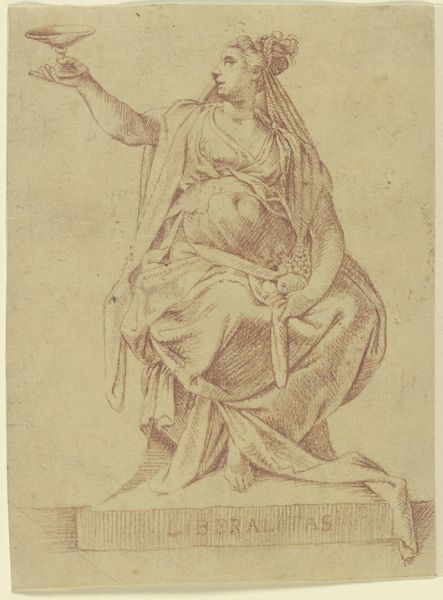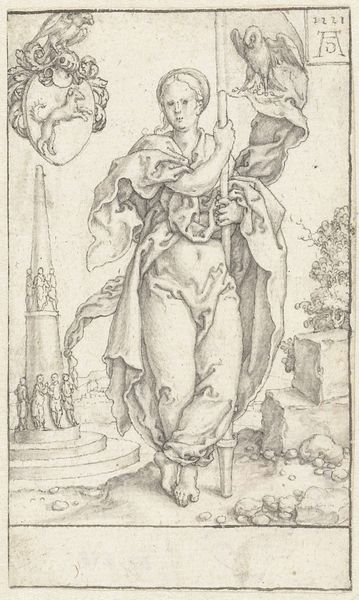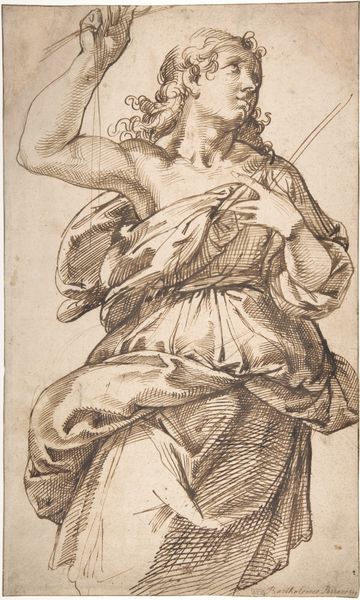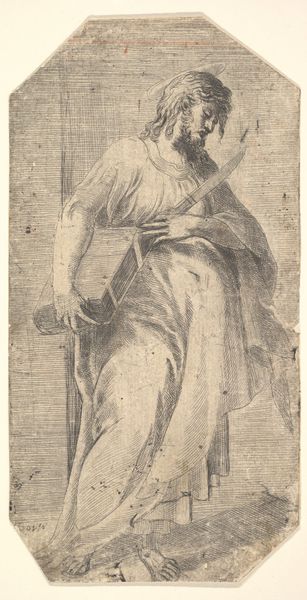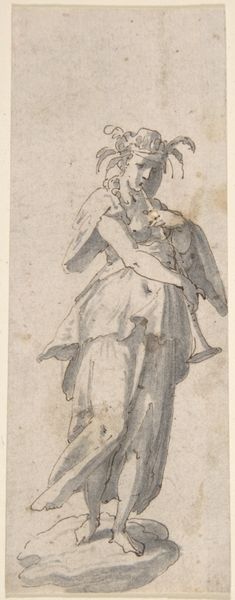
drawing, paper, ink
#
portrait
#
drawing
#
figuration
#
paper
#
11_renaissance
#
ink
#
history-painting
Copyright: Public Domain
Curator: This is Tobias Stimmer's "Apostle Judas Thaddeus," a drawing created in 1578. It currently resides here at the Städel Museum. Editor: It’s surprisingly intimate, a kind of worn dignity about the figure, though rendered in fairly humble sepia ink on paper. His slightly slumped posture really conveys… burden, almost. Curator: I agree. Stimmer's choice of ink as the medium here is very interesting; it makes the artwork readily reproducible, and more easily disseminated to the masses. Drawing, compared to painting, lent itself much better to the burgeoning print market. How would you interpret its socio-political implications in the late 16th century? Editor: Well, the Reformation was raging. Representing a religious figure like Judas Thaddeus in this form, accessible and relatively inexpensive, places him within the broader context of challenging existing hierarchies and creating devotional imagery outside the direct control of the Church. Did Stimmer produce many of these apostles? Were they intended for a series? Curator: Yes, he did. It’s very probable these drawings served as designs for prints. You can really see his graphic, almost woodcut-like approach here, particularly in the figure’s drapery and the consistent line work that defines the shadows. Look closely—you can almost imagine the craftsman carving these lines into a block. Editor: Right, the almost stark quality achieved through line. Thinking about it from a materials perspective – the availability of paper at this time, the process of preparing inks from gall or soot, and the labor involved in creating numerous identical prints... Curator: It speaks to the intersection of art, faith, and nascent capitalism. The rise of printmaking democratized access to imagery and, to some extent, knowledge, subtly shifting the power dynamics between the Church and the individual believer. Editor: Absolutely, seeing art as entangled within broader social and economic structures gives Stimmer’s Apostle Judas Thaddeus even more meaning and context. Curator: Precisely. And the consideration of such production is vital. Thank you for highlighting the importance of the work beyond purely aesthetic concerns! Editor: My pleasure! It's fascinating to peel back the layers of context that make a piece like this so relevant, even today.
Comments
No comments
Be the first to comment and join the conversation on the ultimate creative platform.
